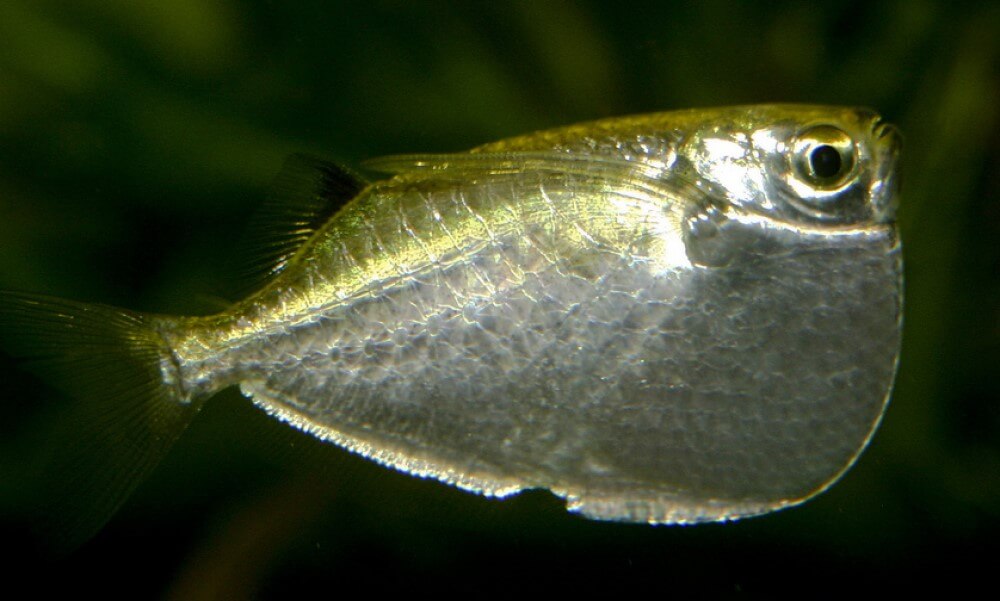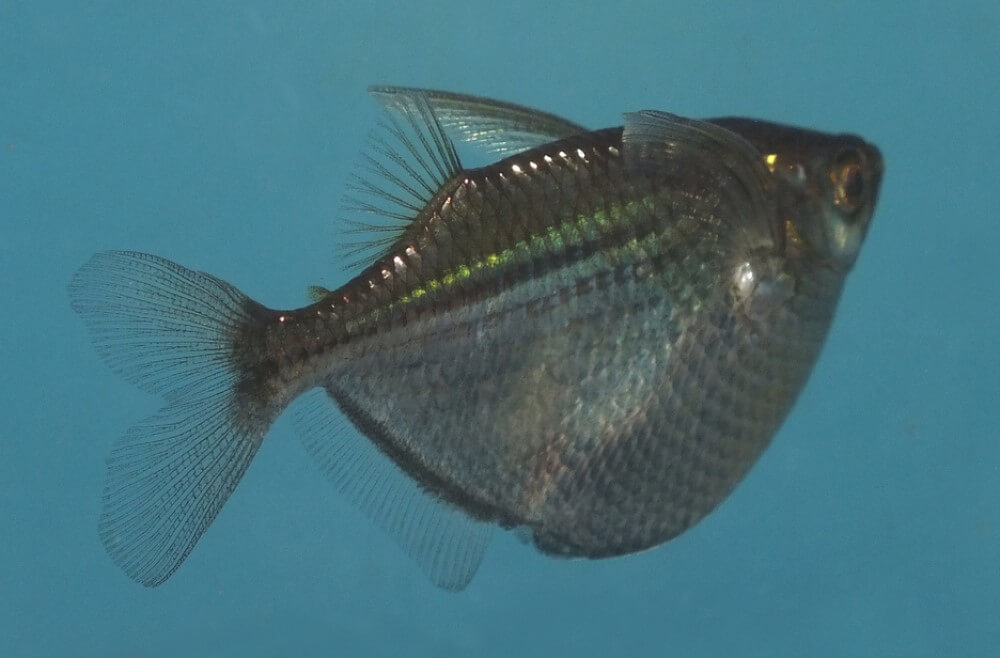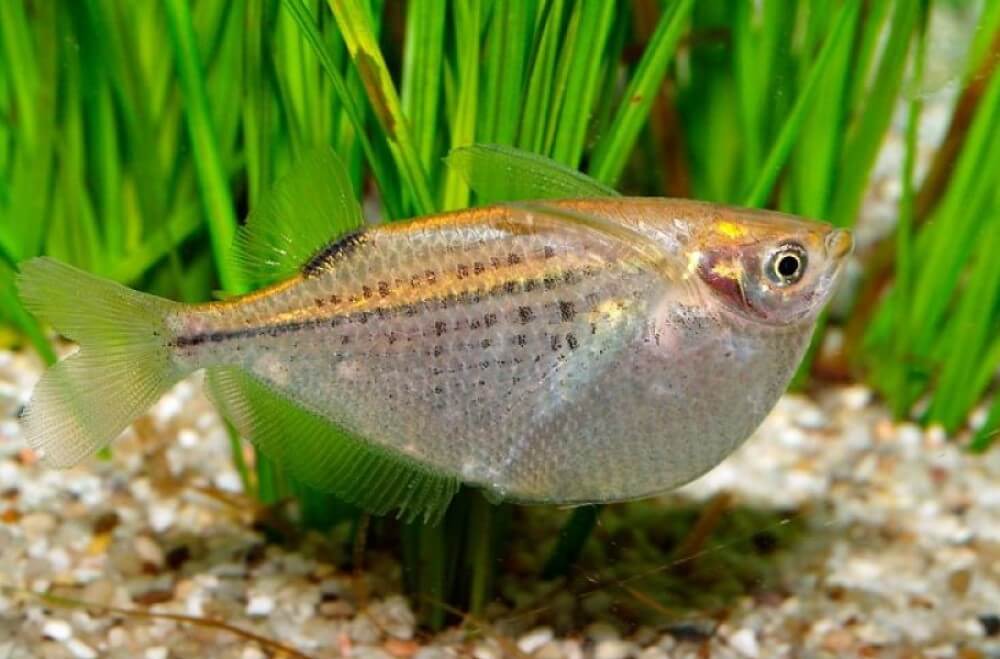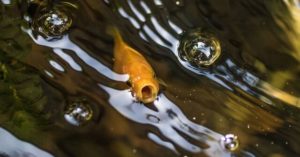Sharing is caring!
Hatchets are another popular addition to any aquarium. They are easily recognizable by their flat body and enlarged sternal region.
Hatchets are generally best for intermediate to advanced aquarists due to being more susceptible to certain illnesses and strong jumpers. They have very strong pectoral fins that allow them to leap right out of the water.
In some instances certain species can even appear to fly along the surface.
These fish will do best in schools of 5 or more. Since they will all tend to hang out at the surface, it’s best to avoid other surface fish in their community.
Hatchet Quick Facts
| Scientific Name: | Varies by Genus and Species |
| Common Names: | Hatchets, Hatchetfish |
| Diet: | Carnivorous |
| Salinity: | Freshwater |
| Tank Size: | 20 Gallon Minimum |
| pH: | 6 – 7 |
| Behavior: | Peaceful |
| Max Size: | 2 1/2 Inches |
| Lifespan: | Up to 5 Years |
| Temperature: | 73 to 80 ℉ |
| Origin: | South America |

Hatchet Origins
Commonly referred to simply as Hatchetfish, or Hatchets, they are technically as Family of fish. This family, the Gasteropelecidae, are made up of 3 different Genus’s encompassing 9 different Species.
Hatchets got their name for having a hatchet-like appearance from the side. They are native to both South and Central America.
Hatchet fish have the ability to jump out of the water and seemingly “fly” along the surface. Some are even capable of leaving the surface several inches for several meters. They do this when frightened or to catch flying insects.
The Perfect Hatchet Tank Setup
- 20 Gallon minimum.
- 73-80 ° F.
- Use a tight and secure lid to prevent escape. (or leave a large air gap)
- Keep in schools of 5 or more.
- Keep with all around, middle, or bottom dwellers.
- Prefers a planted tank with floating plants.
- Proper filtration required.
Common Hatchet Species
A list of the more commonly available Hatchets and their specific features.
Marble Hatchet
(Carnegiella strigata)
- Max 1 1/2 Inches
- Min 20 Gallon Tank
- Easiest Hatchet species to breed in a home aquarium
Silver Hatchet
(Gasteropelecus sternicla)
- Also known as “Common Hatchet”
- Max 2 1/2 Inches
- Min 20 Gallon Tank
- Difficult to breed
Dwarf Hatchet
(Carnegiella schereri)
- Often mistaken for the Silver Hatchet
- Max 1 Inch
- Min 20 Gallon Tank
Giant Hatchet
(Thoracocharax securis)
- Not commonly found in aquariums. (included for fun)
- Max 3.5 Inches (largest of the Hatchets)
- Min 50 Gallon Tank
Hatchet Diet
Hatchets are carnivores and require a variety of live food and various meats. They love insects however you can get them, such as mosquito larvae or flies
They will also eat flake food designed for carnivores, bloodworms, and tubifex.
Avoid any foods that sink. Hatchets are surface eaters and won’t benefit from sinking meals.
Feed your fish two times a day no more than they can consume within 5 minutes or so. Any food that they don’t eat will sink to the bottom and both exaggerate the cleaning requirements but also increase the ammonia in the water. Water quality is especially important in smaller tanks or bowls.

Hatchet Compatibility
Hatchets can be kept with any community and peaceful fish available. They do best when kept in schools of 5 or more. This also prevents them from bugging other fish. Ensure they are floating hiding places available.
They will spend all of their time at the surface and should be kept with fish that enjoy other levels. Good options are Barbs such as the Cherry Barb, Cory Cats, Danios, Gouramis (unless you’re planning on breeding them), and various Tetras.
Sharing is caring!





